NUMERICAL SIMULATION
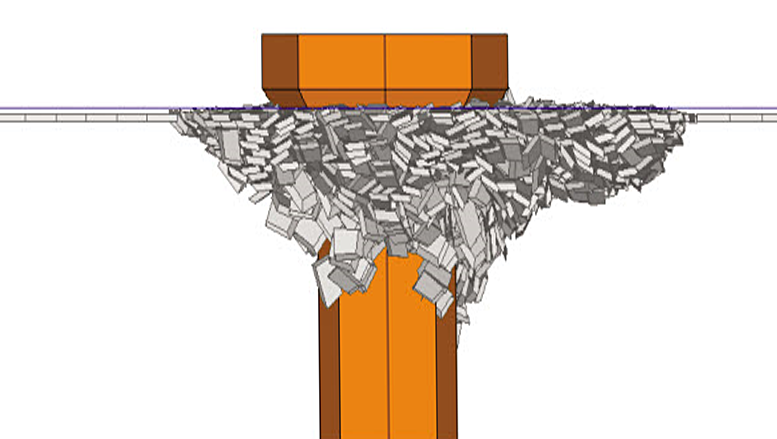
DECICE
DECICE is a time-domain solver that uses discrete elements to model ice engineering problems. The elements undergo rigid body translation and rotation according to Newtonian mechanics, and interaction forces, both normal and tangential (resulting from friction), are modeled when bodies contact one another. Each body can be elastically deformable and fracturable under internal stress to produce new elements. The fracture model is based on Mohr-Coulomb failure criteria with a tension cutoff, and brittle failure modes can be either compressive, shear, tensile, or flexural.
External loads may be applied, such as those resulting from ship thrust, mooring lines, wind, or current. Ice buoyancy and weight can also be included. The 2-dimensional version is useful for modeling large-scale ice transport problems, such as ice movement between bridge piers, while the 3-dimensional version is applicable to icebreaking ships or general ice-structure interaction. The 3-dimensional version also includes an iceberg scour model for examining scour depth in the vicinity of buried pipelines. Examples of ice-structure interaction modeling include:
- modeling of an iceberg striking a subsea wellhead protection silo;
- collision between an iceberg and a moored spar;
- investigation of peak loads on conical structures;
- pack ice motion around a moored barge; and,
- modeling of ice arching between bridge piers.
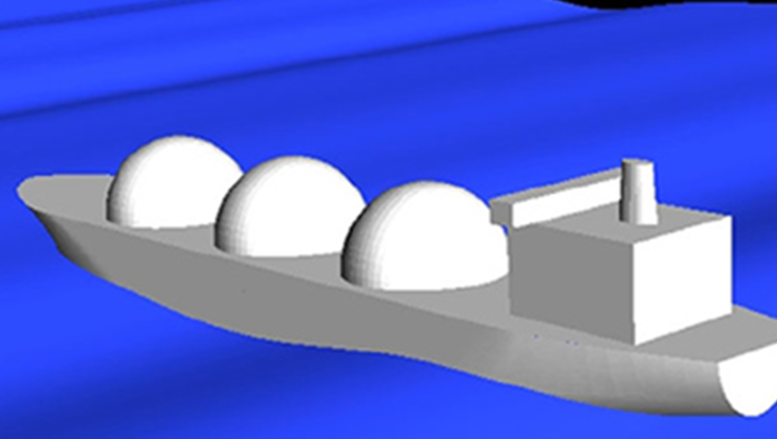
MOTSIM
MOTSIM is a non-linear time-domain seakeeping simulation program that can predict vessel motions in six degrees of freedom in any wave conditions. The seakeeping simulation produces a time history of motions at the vessel’s center of gravity. This data is used to determine the motions, velocities, and accelerations for any other location on the vessel, assuming rigid body dynamics. Unlike frequency-domain codes, MOTSIM is not limited to long, slender ship types and assumptions of linear response. A range of vessels can be accommodated, including traditional monohulls, semi-submersibles, and small waterplane area twin hulls (SWATHs).
Basic seakeeping and/or RAO
Slamming/greenwater assessment
Point monitoring
Dynamic positioning evaluation
Roll reduction system evaluation
Special systems
Habitability analysis
Visualization of results
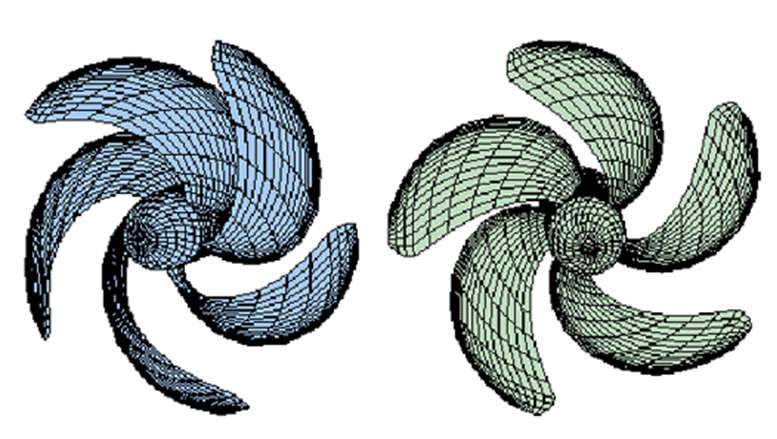
PROPELLA
PROPELLA is a non-linear unsteady panel method used for analyzing various propeller-related problems. Propellers with 2 to 10 blades, as well as nozzles, rudders, stators, and/or propellers pods, can be assessed. Operating conditions can range from bollard through to vanishing thrust. By using uniform flow analysis, the optimum design efficiency can be determined and parameters such as pitch, rake, skew, number of blades, and section shape can be examined. Non-uniform flow can be assessed in which a realistic inflow (axial, tangential, and radial values) is specified to allow calculation of operational characteristics in a ship’s wake. Cavitation characteristics and resulting thrust loss can be determined for heavily loaded propellers. The PROPELLA code also has the ability to model blockages, such as the close proximity of submerged ice pieces, and to assess the hydrodynamic effects of operating in such extreme conditions. This allows the effects of cavitation to be assessed as propeller blades move in and out of regions of blocked flow. Output includes shaft thrust and torque, in- and out-of-plane bending moments, spindle torque, and instantaneous pressure distributions. This data can be used as input for propeller structural design calculations.
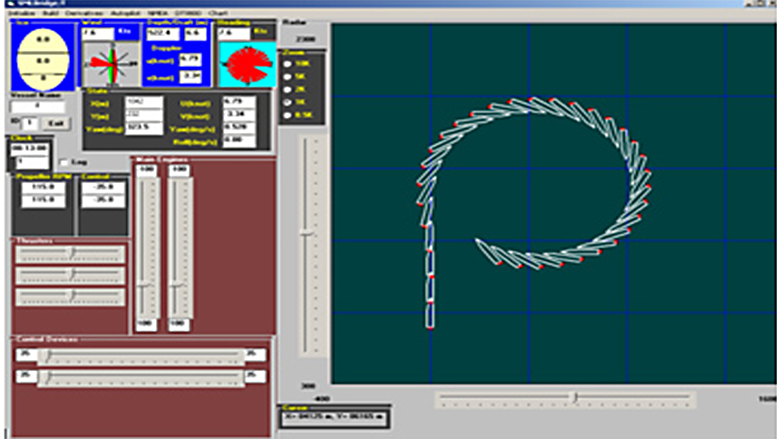
SML (Ship Maneuvering Laboratory)
Vessel maneuvering can be assessed by using Oceanic’s in-house computer program SML (Ship Maneuvering Laboratory) to solve the rigid body equations of motion in three (surge, sway, and yaw) or four (including roll) degrees of freedom. Single-or multi-vessel simulations can be completed with customized machinery arrangements for a range of environmental (wind, ice, and current) and bathymetric conditions. Both shallow water and restricted channel effects are included. Special algorithms have been created to assess towing, mooring, or dynamic positioning scenarios. Code results can be used as input for ship simulators so that pilots and captains can experience vessel maneuverability before sea trials or operations.
The SML code has recently been enhanced by the addition of various ice algorithms for pack and level ice, and pressure ridge ramming.
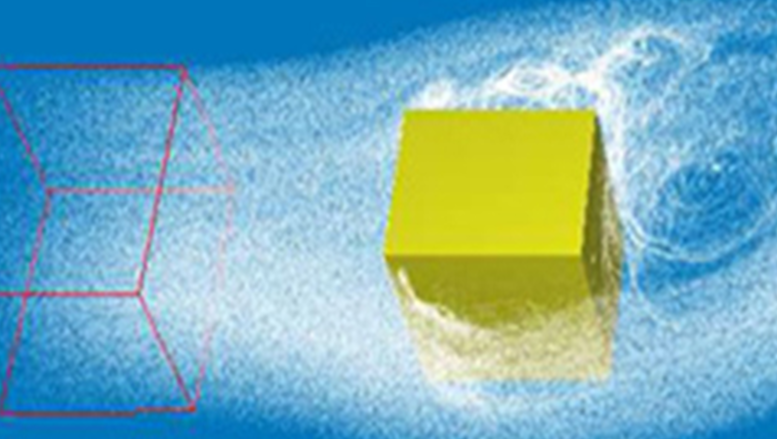
FLOW-3D
FLOW-3D is a multi-physics computational fluid dynamics (CFD) package that has been in worldwide distribution since 1985. It provides insight into many physical flow processes, including solutions coupled to thermal energy transfer, 6-degree of freedom fluid-solid interaction, and mechanical and thermal stress analysis. It is a simulation software tool used for research in the design phase and to improve production processes.
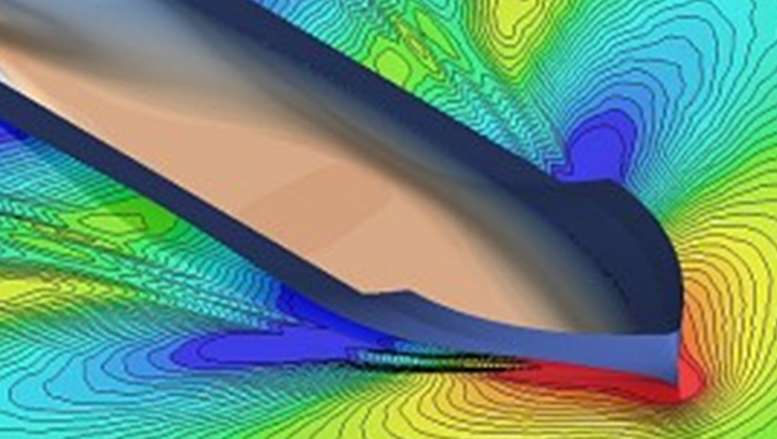
STAR-CCM+
STAR-CCM+ is a CFD solver used for solving problems involving flow (of fluids or solids), heat transfer and stress. It is designed to handle problems involving physical and complex geometries. The application employs a client server architecture to allow users to solve problems from a lightweight computer, such as a laptop, while the computationally expensive math is done on a remote machine.
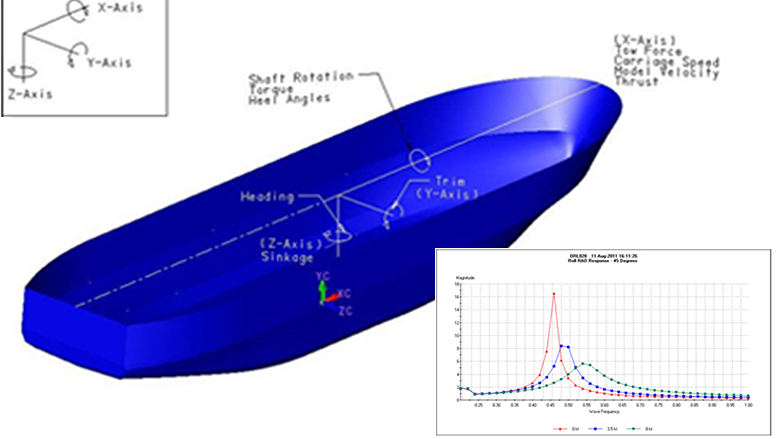
ShipmoPC
ShipmoPC is a seakeeping prediction code developed by Defense Research and Development Canada (DRDC) which has been validated against model data for a wide variety of ships including offshore supply vessels, FPSO’s, coastal defense vessels and barges, icebreakers and naval ships.
The code is based on two-dimensional strip-theory and solves for frequency domain seakeeping parameters (motions, accelerations, relative motion, shear force and bending moments). Boundary element method or the Lewis forms (conformal mapping) method is used in ShipmoPC to determine hydrodynamic properties of the ship hull. As strip theory forms the basis of ShipmoPC, common assumptions for this method are adopted. The fluid is assumed to be incompressible, inviscid, and non-rotational. Most importantly, motion amplitudes and velocities are assumed to be small.
ShipmoPC can be used to analyze mono-hull ships of all sizes whose length to beam ratio is larger than 4 (to comply with the strip theory assumptions). The code is also more accurate for moderate ship speed (Fr< 0.35-0.4) and sea state up to sea state 6. Outside of these ranges, results from ShipmoPC can still be used for comparison purposes or as initial estimates. Moreover, it can be used in fatigue analysis as load predictions are reliable in lower sea states.
Outputs from ShipmoPC are ship motion and load predictions including the following:
- Ship motions in six degrees of freedom in regular and irregular seas(RAOs and RMS)
- Motions at user-specified locations
- Still water and wave induced load assessment
- Deck wetness, slamming occurrence, slamming pressures, and human tolerance factors (MII, tipping and sliding)